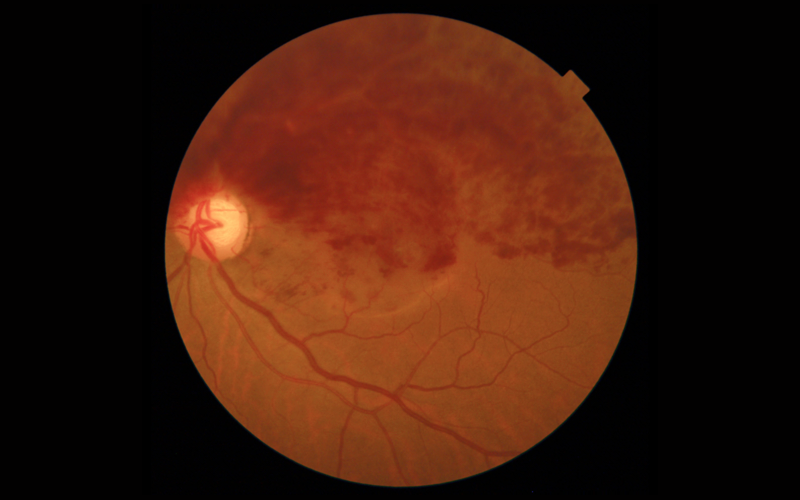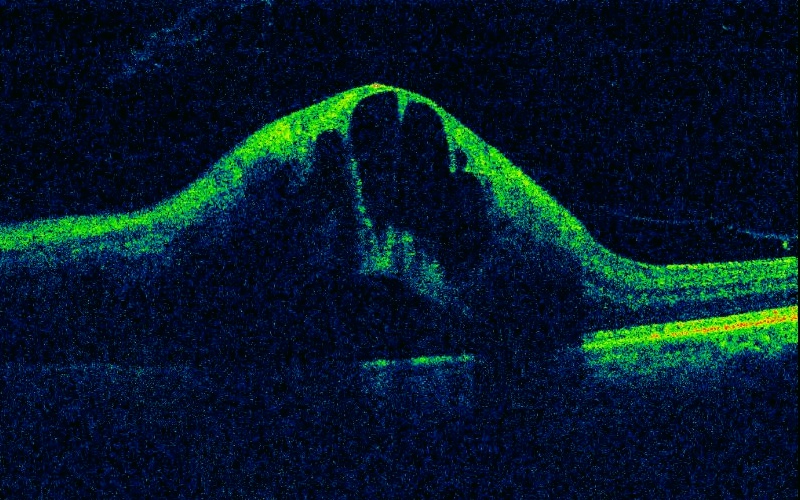
17 Jul Retinal Vein Occlusions (BRVO, CRVO)
The retina has one main artery and one main vein to carry blood to and fro. When the main retinal vein becomes blocked, it is called central retinal vein occlusion (CRVO). When branches (tributaries) of the retinal vein become blocked, it is called branch retinal vein occlusion (BRVO).
When the vein is blocked, blood and fluid spills out into the retina. The macula can swell from this fluid, affecting the central vision. Without blood circulation, nerve cells in the eye can die and more vision could be lost. At times body creates new blood vessels (neovascularisation) to compensate for the block. However these are fragile and create more problems. In BRVO these are usually found on the retina (NVE) or the disc (NVD) and can lead to bleeding in the vitreous. In CRVO they are formed on the iris (NVI) in front part of the eye causing eye pressures to rise (glaucoma).
Most patients present with blurry vision that happens suddenly or over several days. If bleeding occurs, it causes floaters or a sudden drop in vision. Glaucoma causes pain and pressure in the affected eye.
RVOs almost always happen in one eye at a time.
RVO usually happens in people who are aged 50 and older. People with high blood pressure, diabetes, glaucoma and hardening of the arteries (called arteriosclerosis) are at a higher risk.
To lower your risk for BRVO, you should do the following:
- Eat a low-fat diet
- Get regular exercise
- Maintain an ideal weight
- Avoid smoking and tobacco
A retina specialist can diagnose an RVO by examination. An OCT scan will tell the amount of swelling on the macula and decide the treatment. A fluorescein angiography identifies the blocked vessels and also the abnormal new vessels.
Since BRVO cannot be cured, the main goal of treatment is to keep the vision stable.
Swelling of the macula is best treated with intravitreal injections of anti-VEGF or steroids.
Laser treatment may be used to seal the leaking blood vessels and to scar the abnormal new vessels.
While most people see some improvement in their vision, some people won’t have any improvement.





Sorry, the comment form is closed at this time.